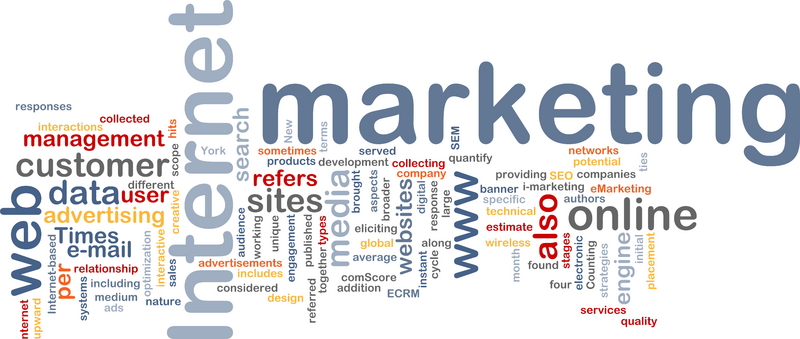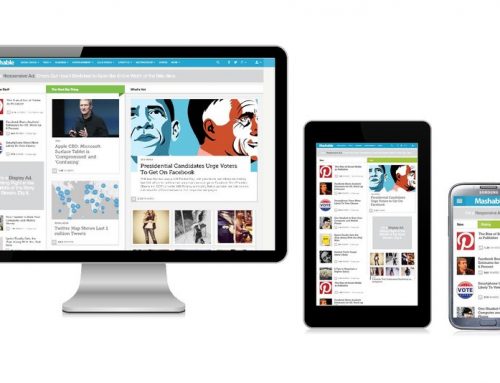When you’re starting a new business or delving into the world of online marketing for the first time, not only do you have a lot to learn about the types of online marketing and best practices for each of them, but you’ll find there’s a whole new language you have to learn.
You can expect to encounter marketers casually throwing around terms and acronyms like they think everyone will understand them (hint: not everybody does, it’s not just you).
To help you navigate all the new, confusing language of online marketing, we’ve put together a glossary of online marketing terms you’ll want to know. Bookmark this for future use so you have a handy resource next time you come across a marketing term that leaves you scratching your head.
A/B testing – The practice of releasing two marketing items that are similar in every way but one, in order to see which of the changed elements performs better. This can be used for emails, landing pages, calls-to-action, etc.
AdWords – Google’s advertising service that runs many of the ads you see around the web, in particular those that show up above and to the side of organic search results.
Affiliate marketing – A marketing practice wherein bloggers or other influencers include links to a brand’s website in their content and earn part of the proceeds for customers they help refer.
Anchor text – The words that are used in a link (the ones you usually see blue and underlined on the page).
Backlinks – A term commonly used in SEO to describe links from other websites that point back to yours.
Banner ads – A form of online advertising in which a visual ad shows up somewhere on a website’s page, usually an image in a square or rectangle shape. These can be at the top of the page, to the side, or embedded within the text.
Behavioral targeting – Many online advertising platforms allow you to target ads based on online actions users have take in the past. For example, if a person’s browsing history suggests they’re a runner (or hoping to become one), marketers selling running shoes can target their ads at them.
Bing – One of the main three search engines people use.
Black hat SEO – SEO tactics aimed at essentially tricking search engine algorithms into ranking a website higher, such as keyword stuffing and comment spam. Google’s constantly refining their algorithms to penalize sites that use black hat tactics.
Bounce rate – A marketing metric that measures the percentage of website visitors that leave your site without visiting more than the page they landed on.
Buyer persona – A marketing tool that helps people imagine the audience they’re targeting by creating a description of a fictional person that would be your ideal customer. Most companies develop several buyer personas to help guide their marketing.
Buyer’s journey – The path prospects take to become a customer. This often includes the initial actions taken when a person first learns about a company, a period of doing research and interacting with a company’s website and content to learn more, then the decision to purchase.
Blog – A commonly used content marketing platform for publishing frequent written content that provides value to visitors in the hopes of improving SEO, developing a relationship with potential customers, and gaining new email subscribers and customers.
Case study – A written piece of content that describes the success story of a past or current customer in order to convince new leads to consider doing business with you.
CMS (Content Management System) – A type of marketing software that makes it easier for companies doing content marketing to create, edit, organize, and schedule pieces of content.
Content creation – The act of creating any type of content used in content marketing.
Content distribution – The tactics businesses use to spread their content on the web so new people in their target audience will encounter it.
Content marketing – A form of online marketing based on the practice of creating valuable, relevant content that helps brands attract new leads and build relationships with customers and people in their target audience.
Content promotion – The tactics used to promote content that you’ve created to ensure people in your target audience see it.
Content strategy – The strategy that guides your content marketing efforts. Developing a content strategy plays a key role in doing content marketing well.
Contextual advertising – A form of targeted advertising in which the ads displayed relate directly to what a person is doing or seeing at the time. For example, someone reading an article about gardening tips could see an ad for a fertilizer alongside it.
Cookie – The online tool used for tracking user behavior. When you visit a website, the site’s cookie will record your visit and send a message to your web server. This record of your web activity is what helps fuel targeted marketing.
CTA (Call to Action) – For every piece of marketing you create, there’s an action you’re hoping your audience will take. The call to action is where you express that and urge your visitors toward what you want them to do next (click here, sign up for your email list, etc.).
CTR (Click-Through Rate) – CTR is a marketing metric that measures the percentage of people who viewed a link that chose to click on it.
Conversion optimization – Online marketing tactics designed to increase your conversion rate.
Conversion rate – The percentage of visitors that take the desired action you want them to. As an example, for an email promotion a conversion could be clicking a link in the email to go to a website landing page.
CPA (Cost Per Acquisition) – One of the billing methods common in online marketing. For any channel that charges based on CPA, you’ll pay a set rate when their referral results in a sale.
CPC (Cost Per Click) – Another billing method in online marketing that’s especially common in search advertising. Based on this model, you only pay when someone clicks on an ad.
CPM (Cost Per Impression) – A third billing model for online marketing, CPM is when you pay each time an ad is seen by a certain number of people.
CRM (Customer Relationship Management) – An approach to tracking, analyzing, and managing all aspects of a customer’s relationship with a company from their first interaction through their time as a customer. Sometimes the same acronym is used to refer to software that helps enable customer relationship management.
Domain authority – A measure of how respected a website is according to search engine algorithms which plays a role in its likelihood to show up high in search engine rankings.
Earned media – Marketing that focuses on unpaid promotional efforts, such as guest posts or customer word of mouth. Earned media is often discussed in comparison to owned and paid media.
Ebook – A longform written piece of content. Ebooks are often used as gated content to collect new information on leads.
Email marketing – All marketing delivered through email. This includes promotional emails, emails that promote content, and email drip campaigns for new leads and customers.
Engagement – An oft-used term in online marketing that describes interactions prospects have with a brand.
External link – A link on another website that points back to yours.
Facebook – The biggest social media network and therefore one that potentially provides brands a lot of opportunities to interact directly with their audience.
Gated content – High-value content that you put behind a web form so people have to provide you information (usually things like email address, job title, etc.) in order to access it.
Google – The biggest and most important of the search engines. While SEO includes optimizing for Bing and Yahoo as well, the vast majority of the focus goes to Google.
Google Analytics – The tool Google provides for tracking and measuring website success through a variety of useful analytics.
Guest Post – A post a brand has published on a third-party blog as a way to promote the brand, reach a new audience, and gain external links.
Hashtag – Popularized by Twitter, a hashtag is a word or phrase that’s preceded by a pound sign (#) that can help people follow trending topics on the website.
Inbound marketing – A marketing strategy based on the idea of attracting people to your brand rather than pushing out ads at them.
Influencer marketing – A marketing tactic that involves working with popular figures in an industry or space in order to reach more followers. For example, a business that sells cooking supplies might partner with a food blogger who creates recipes that require using the company’s supplies.
Infographics – A visual form of content marketing that collects interesting facts or data and displays them in a visually attractive way.
Instagram – A growing social media platform with a visual focus.
Internal link – Links on your website that point to other pages on your website.
Internet marketing – Another term for online marketing.
Interruption marketing – Any marketing that interrupts what a person’s doing to get their attention (e.g. commercials, autoplay videos embedded in an article, pop-up ads). A term used to differentiate content marketing and inbound marketing from traditional advertising.
Keyword – The words and terms people use when searching for something online
Keyword research – The research marketers perform for SEO and PPC to determine which keywords their target audience are using in order to know which ones to focus their marketing efforts on.
Keyword stuffing – A black hat SEO tactic that involves filling a page with your target keyword in an unnatural way in the hopes of increasing your chances of ranking for it. (Note: this tactic no longer works and should be avoided).
Landing page – The page a link or ad sends your visitors to. Landing pages should be relevant to whatever ad or link sent visitors and designed to increase the likelihood of a conversion.
Local SEO – The search engine optimization tactics that work best for businesses with a local focus (e.g. those specifically out to attract customers within a set geographic area).
Link building – Any tactics used to encourage or create links on other websites that point back to your website. This is a key part of SEO.
Long-tail keyword – Longer, more detailed keywords that are less competitive (and often therefore cheaper) to target for SEO and PPC. For example “mother’s day flower delivery in austin” is a long tail keyword, whereas “flower delivery” isn’t.
Marketing analytics – The data online marketing tools collect which help marketers track and analyze the results of their efforts.
Marketing automation – The practice of using technology to automate some aspects of marketing, such as setting up a specific email to go out in response any time a prospect downloads a related ebook.
Marketing Funnel – A visual that helps describe the common buyer’s journey. The idea is that the top of the funnel (TOFU) is the awareness stage where you attract a huge number of leads, the middle of the funnel (MOFU) is where you nurture and develop a further relationship with many of those leads, and the bottom of the funnel (BOFU) is where the few leads that remain toward the end of the process are ushered toward the final sale.
Mobile marketing – Any marketing that either appears exclusively on mobile devices or is optimized for views on mobile devices. With people increasingly using mobile for a wide array of tasks, including much of their shopping, mobile marketing is especially important for online marketers today.
Natural listing – Another term for organic results, this describes the search results that show up that haven’t been paid for.
On-site optimization – The SEO tactics that you can perform on your own website, such as filling in meta tags and including your target keyword in the text on a webpage.
Organic results – The search results that haven’t been paid for (they usually show up below the PPC ads, which are labeled as ads).
Outbound links – Links on your website that point out to other websites.
Owned Media – All the media published on the channels you own, such as your own website and blog and your social media channels. Owned media is often discussed in relation to earned and paid media.
Paid Media – Marketing you pay for, such as search ads, social media ads, and more traditional forms of advertising like commercials and billboards.
Paid Search – Another term for PPC marketing. Any advertising you do on the search engines.
Permission Marketing – Marketing that’s only seen by people who have opted into seeing it. The term is often used to describe opt-in email marketing.
Personalized Marketing – Targeted marketing that uses behavioral or demographic data to deliver relevant messages to specific people. This can be as simple as including someone’s name in an email, or as complex as delivering emails about a product or topic someone’s shown an interest in on your website.
Pinterest – An image-based social media website that many marketers have a presence on.
Pop-up Ads – Any ad that pops up once you’re on a website, sometimes blocking the text of the page to get the reader’s attention.
PPC (Pay Per Click) – Another term commonly used to describe paid search advertising, in which marketers only pay for their ads when a viewer clicks. Pay-per-click advertising produces the ads you see above and to the side of organic search results, as well throughout the rest of the Google Ad Network.
Responsive Ads – Ads that adjust their size, shape, and appearance for optimum viewing no matter what device you view them on. These are increasingly popular and important as more people use mobile devices for much of their internet browsing.
Retargeting – The option of targeting ads at someone that’s already been on your website to increase their chances of returning. When you see an ad seemingly following you around the web for a product your recently viewed, that’s retargeting.
Search rankings – The order that websites appear in search results.
SEM (Search Engine Marketing) – The blanket term that describes any marketing focused on increasing visibility in the search engines, namely PPC, SEO, and some content marketing.
SEO (Search Engine Optimization) – Online marketing tactics designed to improve a website’s rankings in the search engines. Some main components of SEO include keyword research, link building, and on-site optimization.
SERP (Search Engine Results Page) – A common way of referring the page you get to in Google or another search engine after you perform a search.
Snapchat – A mobile social media platform that allows people to post momentary photos, messages, and videos that only exist temporarily before disappearing.
Social Media Analytics – The data provided by the main social media platforms that provide insights into how people are interacting with your social media posts and ads.
Social Media Marketing – Any marketing you do that occurs on one of the main social media platforms. The main ones most businesses make use of are: Facebook, Twitter, Pinterest, Snapchat, Instagram, and YouTube.
Stickiness – A term used to describe anything about a website that keeps visitors around longer or makes them more likely to come back.
User generated content – Any content used in your marketing that’s submitted by your current customers or followers.
Twitter – One of the main social media platforms, characterized by its fast-moving nature and 140-character limit.
Video Marketing – Any marketing you do that involves videos, including video advertisements, live video, 360 videos, and branded webseries.
Viral marketing – Any piece of marketing that “goes viral,” or spreads far and wide on the internet. Viral marketing isn’t usually something you can plan for (although people try).
White hat SEO – Legitimate SEO tactics that are approved of by the search engines. The term is often used in opposition to black hat SEO.
White paper – An authoritative piece of longform written content that’s often used as gated content to gain new information on leads.
Yahoo – One of the main three search engines people use.
YouTube – A widely used social media website focused on videos.





